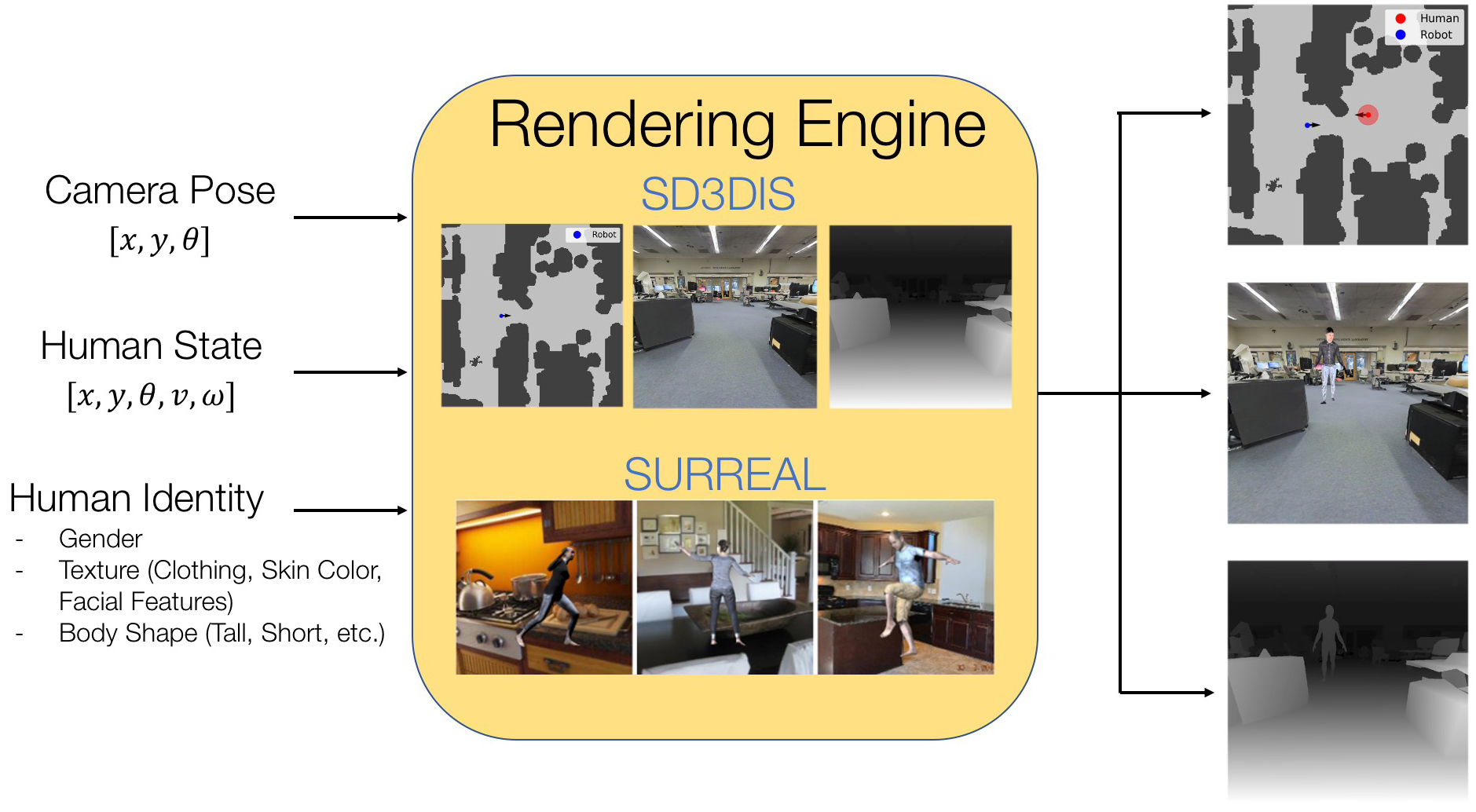Visual Navigation Among Humans with Optimal Control as a Supervisor
Real world visual navigation requires robots to operate in unfamiliar, human-occupied dynamic environments. Navigation around humans is especially difficult because it requires anticipating their future motion, which can be quite challenging. We propose an approach that combines learning-based perception with model-based optimal control to navigate among humans based only on monocular, first-person RGB images. Our approach is enabled by our novel data-generation tool, HumANav that allows for photorealistic renderings of indoor environment scenes with humans in them, which are then used to train the perception module entirely in simulation. Through simulations and experiments on a mobile robot, we demonstrate that the learned navigation policies can anticipate and react to humans without explicitly predicting future human motion, generalize to previously unseen environments and human behaviors, and transfer directly from simulation to reality. Videos describing our approach and experiments, as well as a demo of HumANav are available on the project website.
PDF Abstract

 SURREAL
SURREAL